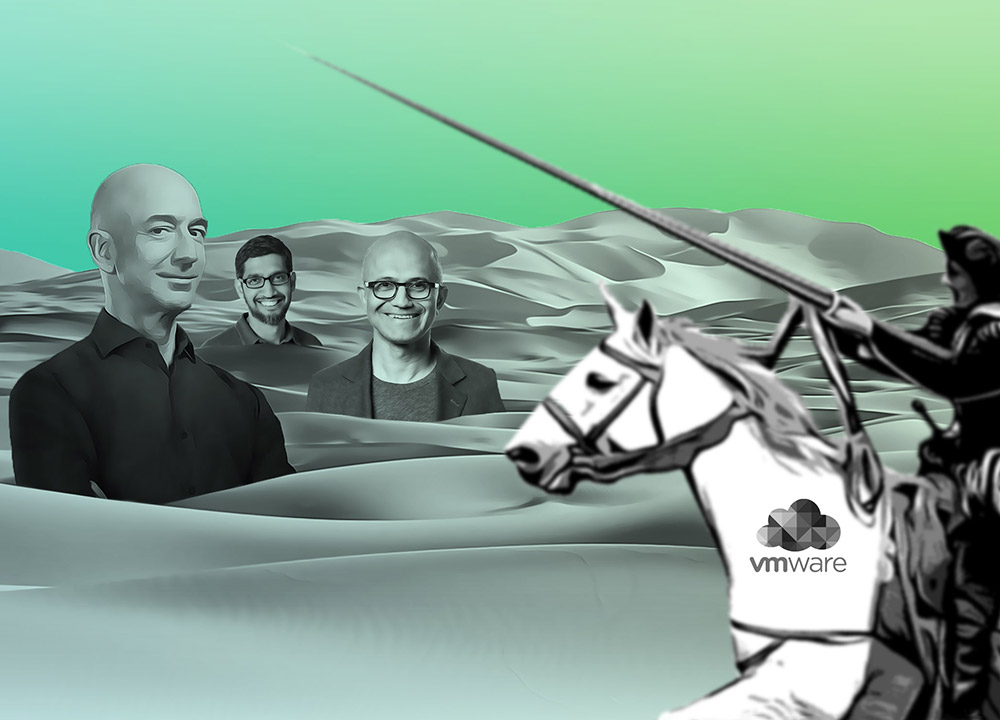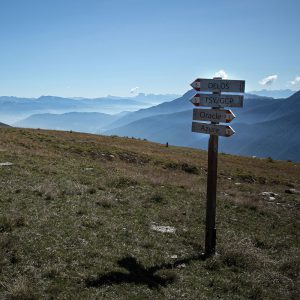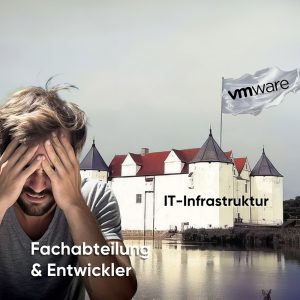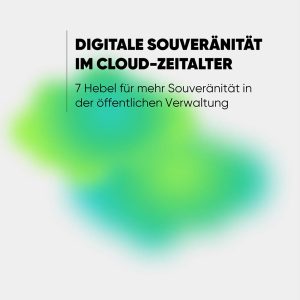VMware and HP jointly funded a documentary about cloud
The documentary is called "Clouded - uncovering the culture of cloud" and tells the journey of Daniel Tremayne-Pitter into the space of cloud technology and data sovereignty. The setup follows the style of a political documentary. The storyline: Many companies moved to public cloud. They ignored risks, government regulation isn’t working, Europe is dependent on the USA, European data is not under European control.
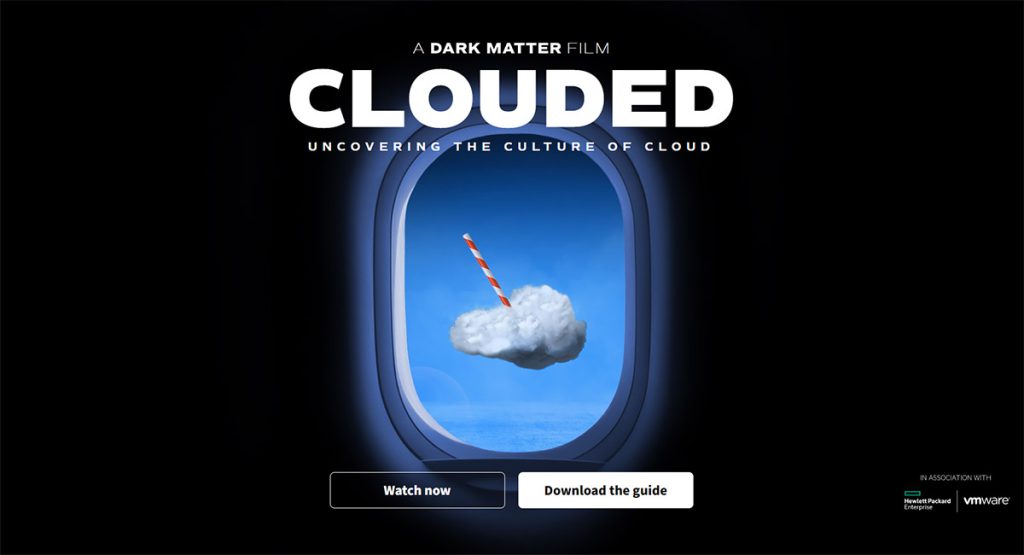
The solution outlined by the documentary: The future of cloud for modern companies lies somewhere between hybrid cloud, multi-cloud, and distributed cloud. It doesn't matter how you call it, as long as it's not only public cloud and it includes some version of an own data center.
The necessary background knowledge
To understand the following critique, you must keep three economic basic ideas about cloud technology in mind:
- Automation: Cloud disrupts classic data centers like steam engines and automated looms disrupted the textile manufactories of the 19th century. If you want to order a piece of IT (e.g. a linux server) in the cloud, it only takes a few minutes. Order process, delivery and billing are fully automated. If you order the same server in a classic data center, it may take days, weeks, or even months involving endless human interactions within the value chain. Economists call this an increase of labor productivity and say it is the foundation of our wealth.
- Outsourcing: As ordering IT from external providers has become so easy and reliable through automation, companies have decided to outsource IT infrastructure and middleware. This plainly follows economic theory (transaction cost theory of Ronald Coase). For the same reason almost all companies have outsourced electricity and water supply to utilities companies instead building power plants or water works themselves.
- Innovator´s Dilemma: VMware has been the longtime market leader for classic data center software. HP has been one of the biggest providers of classic data center hardware. Both companies have been so big and profitable in their old on-premises businesses, that they never dared to really invest into the new technology paradigm (Public Cloud). Now they are struggling to catch-up. This is what happened to Kodak, Nokia and many others before. Clayton Christenson calls such a situation an "Innovator´s dilemma".
A lopsided and misleading portrayal of the cloud trend
The first 25 minutes of the documentary are packed with roughly 40 statements from different experts about the public cloud. Some of them are rather general insinuations:
- "It is like crackware" (Bill Roth, VMware, from minute 19:57).
- "You could have an entire cloud anonymous … you know… have a meeting … it has been three weeks since my last bad cloud decision." (Bill Roth, VMware, from minute 20:16).
- CIOs usually stay for short periods of time. In the beginning, they blame problems on the predecessor. When people find out the public cloud strategy does not work, they hop to the next job. (shortened and summarized from Joe Baguely, VMware, from minute 6:30).
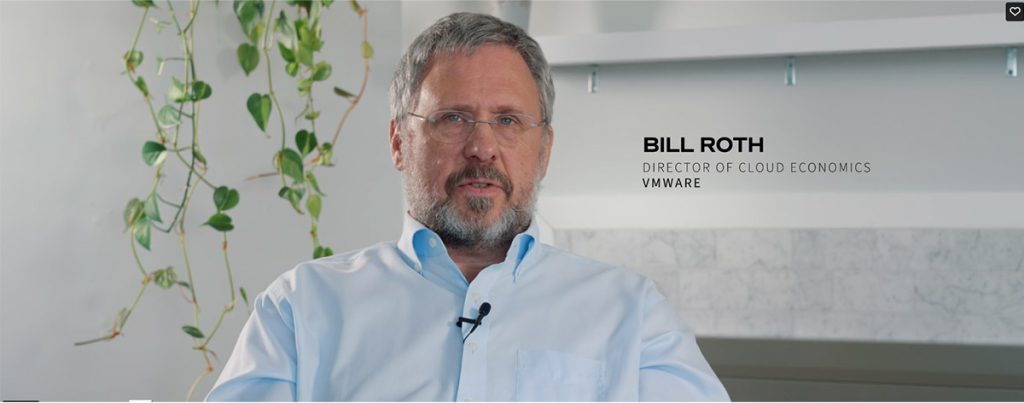
However, most of the statements are true in general. But if you don’t know the underlying technological and economic basics, you won’t understand why most corporate managers were right to shift many of their companies’ workloads to the public cloud, despite all its undisputed disadvantages.
For example, Kirk Bresniker (HP, from minute 11:00) says that purpose-built systems in private data centers can be much more efficient in terms of costs, infrastructure usage and data transfer. Unfortunately, he doesn’t mention that this infrastructure efficiency in classic on-premises environments includes years of planning and huge capital investment combined with a multitude of error-prone human-based processes for every single change. Eventually, these infrastructures lead to risk averse and slow-moving organizations that tend to fail in developing new businesses. Such missed market opportunities can cost them fare more in missed revenues than they can save through IT infrastructure efficiency.
Many other statements are heading in an even pointless direction. Here are some experts´ statements condensed to their core:
- If your public cloud vendor has an outage, your IT does not work anymore. (Bill Roth, VMware, from minute 13:15)
- At some point, companies realize that the public cloud is not for free. (Luc Julia, Renault, from minute 16:00)
- The average public cloud bill contains many cost items. (Bill Roth, VMware, from minutes 18:30)
- When you start small and then grow, you need to pay more. (Bill Roth, VMware, from minute 19:45)
- It is unclear if the public cloud providers will continue to keep prices constant. (Corey Quinn, DuckGroup, from minute 22:30)
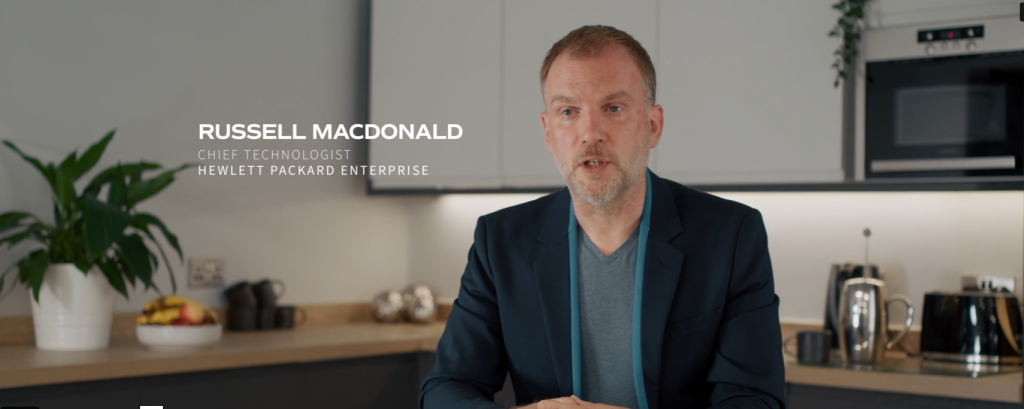
What is the proposed solution?
The film´s website gives a hint: www.consciouslyhybrid.com. Consciously hybrid implies "hybrid cloud" which is commonly used for an application or a set of applications that use both, the public cloud and on-premises data centers. Francesco Bonfiglio (Gaia-X) uses the terms "federated cloud" and "edge". Thomas Maurer (Microsoft) prefers "distributed cloud" as a solution to bring computing power closer to the user, and to avoid a single point of failure.
The truth behind
The lamentation, the insinuations, the depiction of public cloud, it all makes sense from the perspective of the companies that financed the documentary. VMware and HP are already past the innovator´s dilemma. They didn’t invest in their own public cloud services at the right point of time, because they didn’t want to endanger the basis of their income: Classic on-premises data centers. Instead of riding the wave, they now try to whip the sea, like king Xerxes did in ancient Greece (the sea destroyed his bridges).
Unfortunately, this hidden agenda is not really disclosed and is also difficult for the layperson to discern. This wouldn´t be a scandal if the documentary was promoted as an advertisement for HP/VMware. But it is not. It is said to be a documentary, even promoted by the Gaia-X AISBL on LinkedIn. Moments of true expertise, like the one where Scott Robertson (not from HP or VMware) talks about the two different sets of people with different cultures that fight each other over the hybrid cloud (minutes 55:00) lend credibility to a movie that is misused by VMware and HP officials for their short-term business interest.
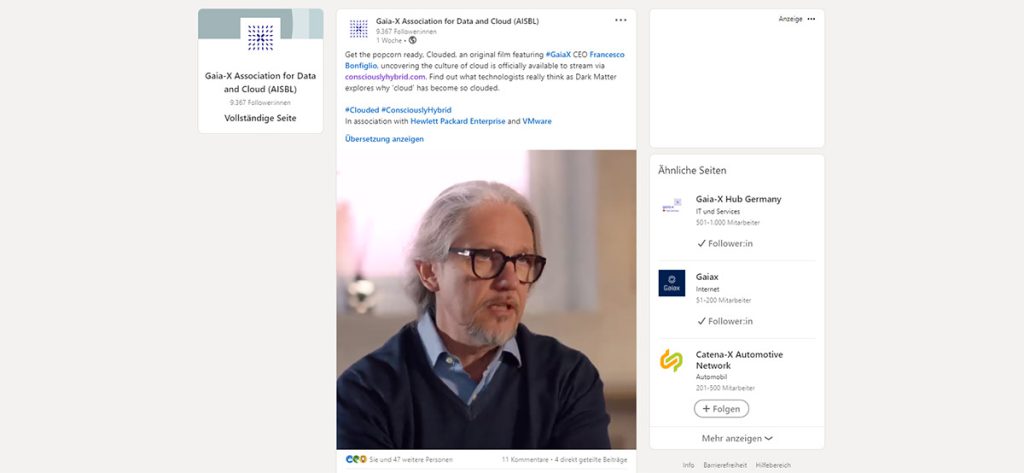
But they are right about European data sovereignty
However, the overall analysis of the state of data sovereignty is correct from a European perspective:
- Too much data is stored within the USA (Simon Hansford, UKCloud, from minute 35:00).
- It is a risk to run so much of the world´s IT with only a few companies, all from one country (Corey Quinn, DuckBill Group, from minute 47:00).
- The US Patriot Act is a dangerous law that goes too far (Corey Quinn, minute 44:00).
- Governments should manage their risks better (Thomas Maurer, Microsoft, from minute 36:00).
- With increased regulation, you will not increase the competitiveness of European IT service providers, and Europe can be viewed as a hostage to extra-European technologies (Francesco Bonfiglio, Gaia-X, from minute 37:00).
The conclusion is poor again
Daniel Tremayne-Pitter's data story is accurate, extensive, and very relevant. Only one crucial point is missing: The single point of failure of European IT (Thomas Maurer, from minute 57:00) is equally true for all the hybrid / distributed / edge IT that is operated in association with HP and VMware. The geopolitical dependencies remain the same, just VMware and HP are added to the likes of Azure, AWS and Google. Bear in mind that a future US president could force VMware to withhold critical security updates as easily as Donald Trump forced Google to refuse updates for Huawei Android phones.
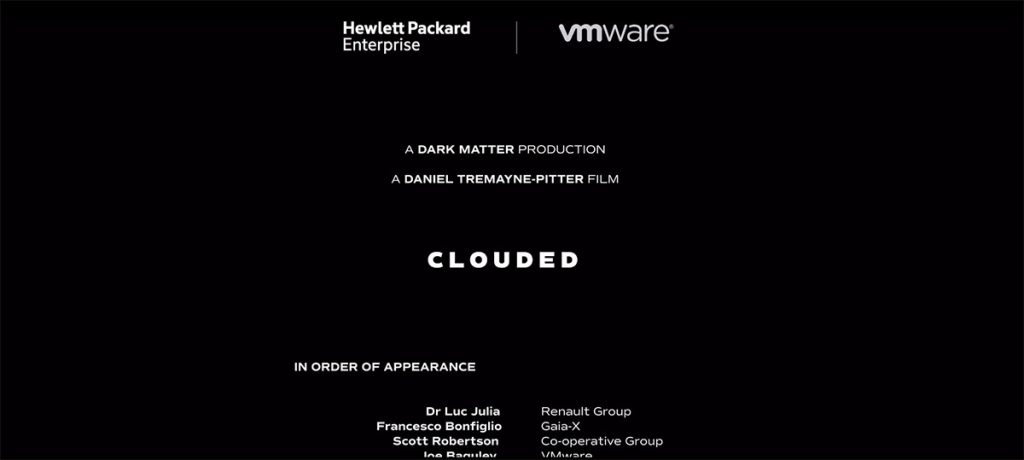
The issue of digital sovereignty is the great missed opportunity of this film. For Europe and everyone else. Francesco Bonfiglio could have explained how exactly a simple Gaia-X layer creates the desired transparency and controllability that frees Europe from its dependency on American software. HP and VMware executives could tell us that they plan to make their software open source (as Google has done with Kubernetes). Luc Julia of Renault could have put forward the vision of bringing European automotive companies together by jointly building a European superscaler for critical infrastructures. Simon Hansford from UKCloud could have suggested plans to make OpenStack-based on-premises software as easy to use as VMware, perhaps collaborating with French and German providers.
But none of them seized this opportunity. All just alluded to the disadvantages of the public cloud and left the viewer with the impression, that a solution is around - in association with VMware and HP.


